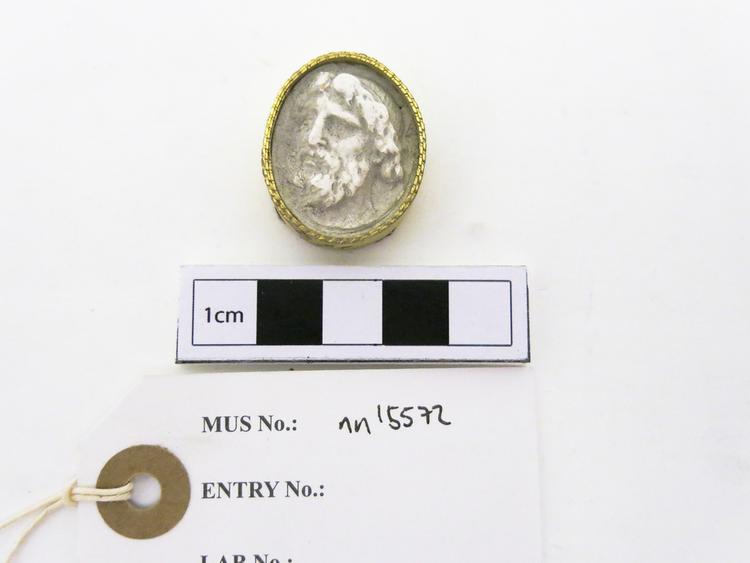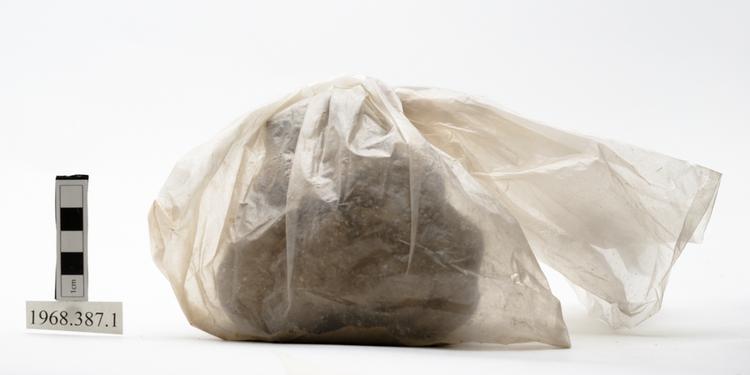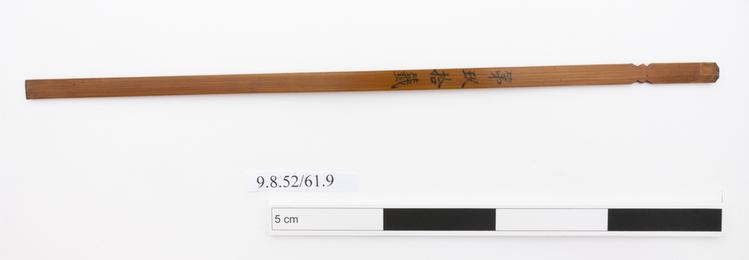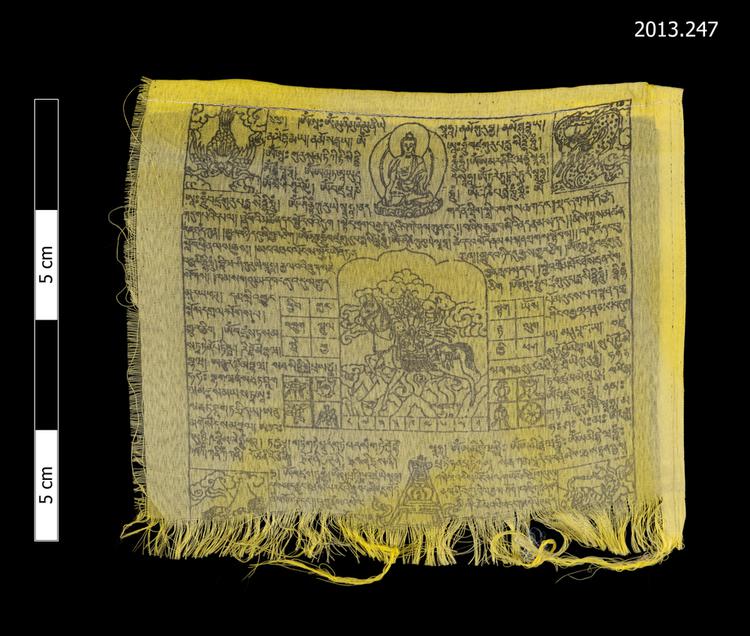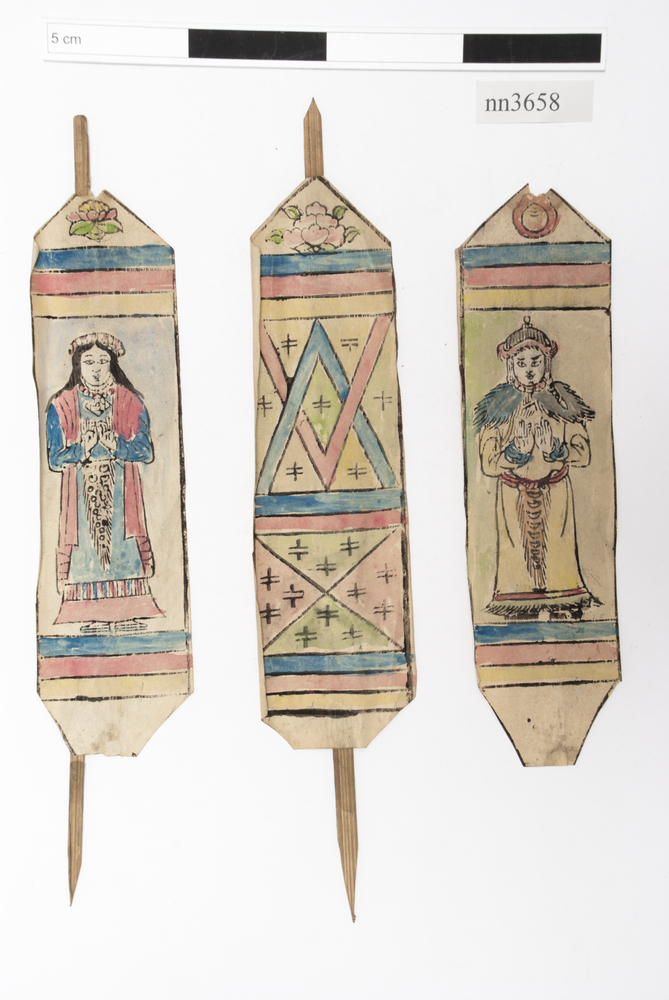
Three protective ransoms (glud tshabs), made of paper and painted in watercolour. One depicts a woman, another depicts geometric designs which may represent a woman, and the other depicts a man.
A similar example is illustrated in Wladamir Zwalf's 'Heritage of Tibet' 1981, British Museum Press (Fig. 13). Zwalf has the following to say about the figure- "Exorcists performed various ceremonies and offerings included forms of ransom, which ranged from scapegoats, for instance two servants who were made to take upon themselves the sins of Lhasa, to the use of strips of wood on which was painted the figure of a man or woman according to the sex of the afflicted person."



